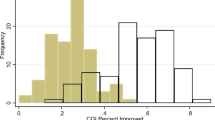Abstract
Rationale
Patient expectations are an important aspect of the placebo response. Color and shape of a medication lead to perceptions that an agent is stimulating or calming, strong or weak.
Objectives
We assessed the degree to which central nervous system medications match the perceived drug action and thereby harness the placebo response.
Methods
We consulted the 2009 Physicians’ Desk Reference and recorded the formulation and color of each referenced dose of central nervous system therapeutics approved for sale in the USA. On the basis of the expectations they engender, orange, yellow, and red pills were categorized stimulating; green, blue, and purple pills calming. White and gray pills were considered neutral.
Results
The majority of the 176 unique doses that were included in the study were in tablet (55%) and capsule (33%) form. Stimulants (75%) were the only drug category primarily formulated as capsules. Of the 176 unique doses included, 43% were stimulating, 23% calming, 23% neutral, and 12% were a formulation other than pill or capsule. There were no instances in which over 50% of the pills of an indication were stimulating or calming in color.
Discussion
Our study did not confirm the hypothesis that pharmaceutical companies color and formulate the shape of drugs to enhance the treatment response. In several instances, each approved dose of a given medication was a different color, and the majority of doses were in tablet form. Further research into the effect of different colors and formulations of medications on perceptions and efficacy evaluations should be considered.


Similar content being viewed by others
References
Adams FM, Osgood CE (1973) A cross-cultural study of the affective meanings of color. J Cross Cult Psychol 4:135–156
Blackwell B, Bloomfield SS, Buncher CR (1972) Demonstration to medical students of placebo responses and non-drug factors. Lancet 1:1279–1282
Buckalew LW, Coffield KE (1982a) An investigation of drug expectancy as a function of capsule color and size and preparation form. J Clin Psychopharmacol 2:245–248
Buckalew LW, Coffield KE (1982b) Drug expectation associated with perceptual characteristics: ethnic factors. Percept Mot Skills 55:915–918
de Craen AJM, Roos PJ, de Vries AL, Kleijnen J (1996) Effect of colour of drugs: systematic review of perceived effect of drugs and their effectiveness. BMJ 313:1624–1626
Duric VM, Fallowfield LJ, Saunders C, Houghton J, Coates AS, Stockler MR (2005) Patients’ preferences for adjuvant endocrine therapy in early breast cancer: what makes it worthwhile? Br J Cancer 93:1319–1323
Fallowfield F, Atkins L, Catt S et al (2005) Patients’ preference for administration of endocrine treatments by injection or tablets: results from a study of women with breast cancer. Ann Oncol 17:205–210
Frank JD, Frank JB (1991) Persuasion and healing: a comparative study of psychotherapy. The Johns Hopkins University Press, Baltimore
Hussain MZ (1972) Effect of shape of medication in treatment of anxiety states. Br J Psychiatry 120:507–509
Jacobs KW, Nordan FM (1979) Classification of placebo drugs: effect of color. Percept Mot Skills 49:367–372
Khan A, Kolts RL, Thase ME, Krishnan KRR, Brown W (2004) Research design features associated with the outcome of antidepressant clinical trials. Am J Psychiatry 161:2045–2049
Khan A, Kolts RL, Rapaport MH, Krishnan KRR, Brodhead AE, Brown W (2005) Magnitude of placebo response and drug-placebo differences across psychiatric disorders. Psychol Med 35:743–749
Leuchter AF, Cook IA, Witte EA, Morgan M, Abrams M (2002) Changes in brain function of depressed subjects during treatment with placebo. Am J Psychiatry 159:122–129
Oken BS (2008) Placebo effects: clinical aspects and neurobiology. Brain 131:2812–2823
Thomson Reuters (2009) Physicians’ Desk Reference, 63rd edn. Thomson Reuters, Montvale
Ridgway D, Khan A, Cierpial MA, Lineberry CG (2007) Subject numbers and placebo outcome variability in clinical trials of new CNS medications. Drug Inf J 41:701–708
Rutherford BR, Sneed JR, Roose SP (2009) Does study design influence outcome? The effects of placebo control and treatment duration in antidepressant trials. Psychother Psychosom 78:172–181
Sallis RE, Buckalew LW (1984) Relation of capsule color and perceived potency. Percept Mot Skills 58:897–898
Schapira K, McClelland HA, Griffiths NR, Newells DJ (1970) Study on the effects of tablet colour in the treatment of anxiety states. BMJ 2:446–449
Author information
Authors and Affiliations
Corresponding author
Appendix
Appendix
Rights and permissions
About this article
Cite this article
Khan, A., Bomminayuni, E.P., Bhat, A. et al. Are the colors and shapes of current psychotropics designed to maximize the placebo response?. Psychopharmacology 211, 113–122 (2010). https://doi.org/10.1007/s00213-010-1874-z
Received:
Accepted:
Published:
Issue Date:
DOI: https://doi.org/10.1007/s00213-010-1874-z




